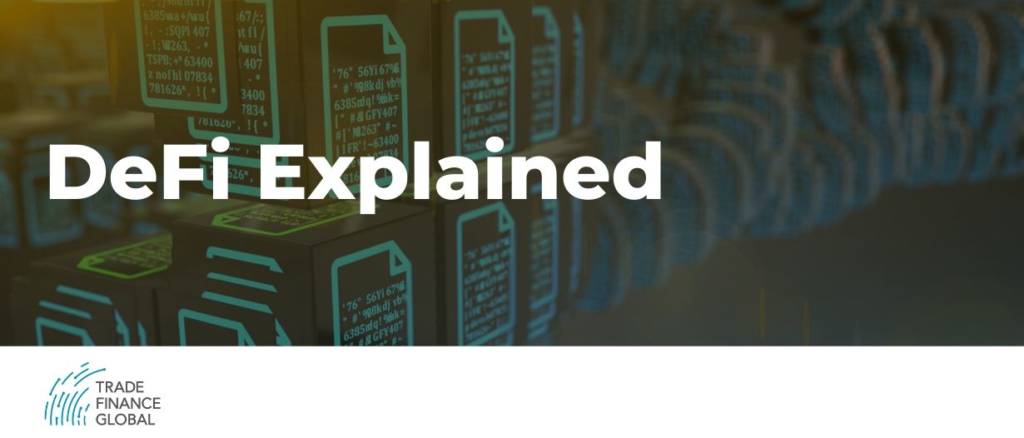Paper has failed us . . .
Daily, our trade finance paper system moves hundreds of billions of dollars around the globe. Daily, our air courier system carries millions of paper documents between importers, exporters, freight forwarders, issuing, confirming, advising and negotiating banks (bills of lading, invoices, packing lists, certificates, ..etc.). Until it didn’t. Our paper trade finance system has failed us.
With the Covid-19 pandemic our paper-based trade finance settlement system suddenly stopped working. Bank trade finance operations have been shut down; courier flights have disrupted; exports are not being settled; millions of containers are in demurrage waiting for documents; ports are shut down; food is not being distributed; and countless trade related jobs and livelihoods have been lost.

URGENT 6 April 2020 – ICC Memo to Governments and Central Banks on Essential Steps to Safeguard Trade Finance Operations.
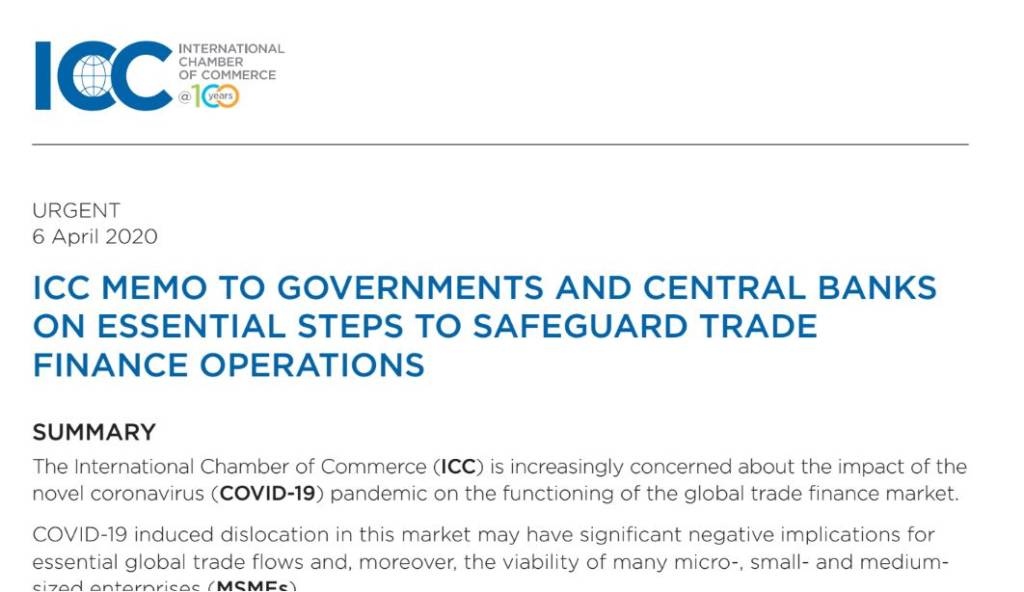
3. Emergency interventions from governments needed to remove reliance on paper-based trade documentation
3.1. In this context, it is imperative that all governments take immediate steps to enable banks to process trade finance transactions utilising electronic trade documents— removing the need for any documentation to be presented in hard-copy.
ICC Guidance paper on the impact of COVID-19 on trade finance transactions issued subject to ICC rules.
5.0 (v) For existing credits subject to UCP 600, if all parties intend to change from paper documents to electronic records, they may do so by agreeing an amendment of the credit from UCP 600 to eUCP Version 2.0. Scanned documents will fall within the definition of an ‘electronic record’ in eUCP Version 2.0, … Similarly, electronic records could be agreed for use with eURC Version 1.0 for documentary collections, ,,,
ICC UCP 600 Uniform Customs and Practice for Documentary Credits Supplement for Electronic Presentation (eUCP version 2.0) are now in effect.
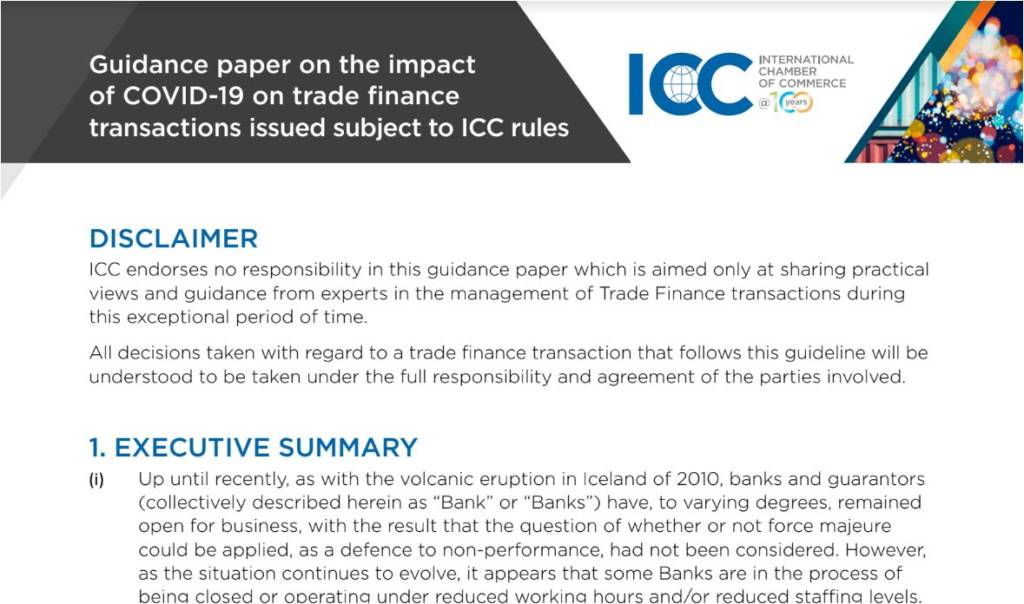
On 1 July 2019, the revised eRules and guidelines for online trade finance arrived for banks, importers, exporters, freight forwarders, chambers of commerce, customs brokers, logistics companies and carriers, to prepare and present electronic records for documentary letters of credit and documentary collections in lieu of or in conjunction with paper documents.
For Letters of Credit eUCP v2.0 highlights
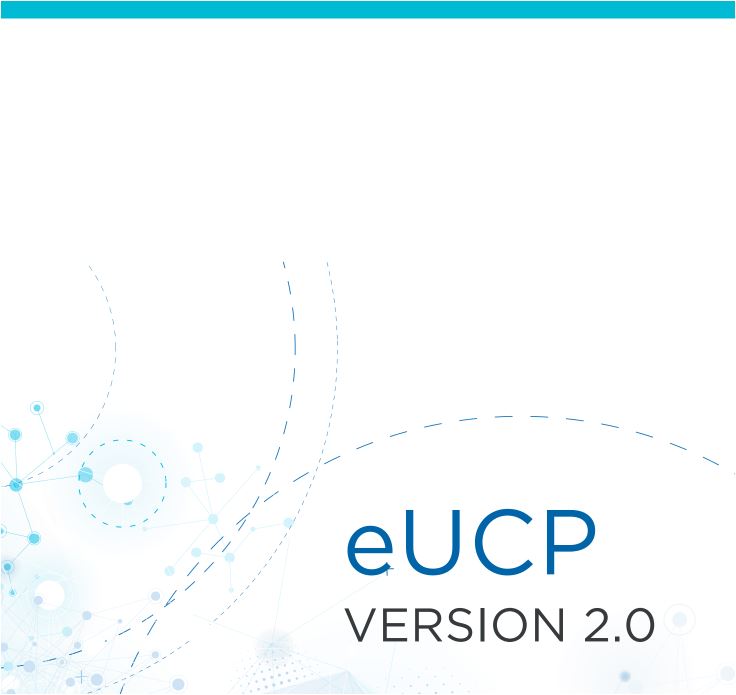
1. The eUCPv2.0 supplements ICC Publication UCP 600 in order to accommodate (digital) presentation . . .
2. The eUCP shall apply where the credit indicates that it is subject to the eUCP (“eUCP credit”).
3. Document shall include an electronic record.
4. Place for presentation . . . means an electronic address . . .
5. Sign and the like shall include an electronic signature.
6. May be presented in any format, unless specified by the credit instrument.
7. A presentation requires a Notice of Completeness (new document).
8. Any requirement for presentation of one or more originals or copies of an electronic record is satisfied by the presentation of one electronic record.
Bank guidelines for issuing eUCP credits
- Documentary letters of credit are already issued electronically as SWIFT MT700 messages. It is the presentation of the required documents that the eUCP Articles provide guidelines for.
- The eUCP shall apply where the credit indicates that it is subject to the latest version eUCP 600 Supplement 2.0.
- The credit must indicate a place for the presentation of electronic records (email address and/or URL). In addition, it must also indicate the physical location of the issuing bank, and the confirming bank, if any.
BAFT’s Digital Ledger Payment Commitment (DLPC) – the holy grail for standardisation?
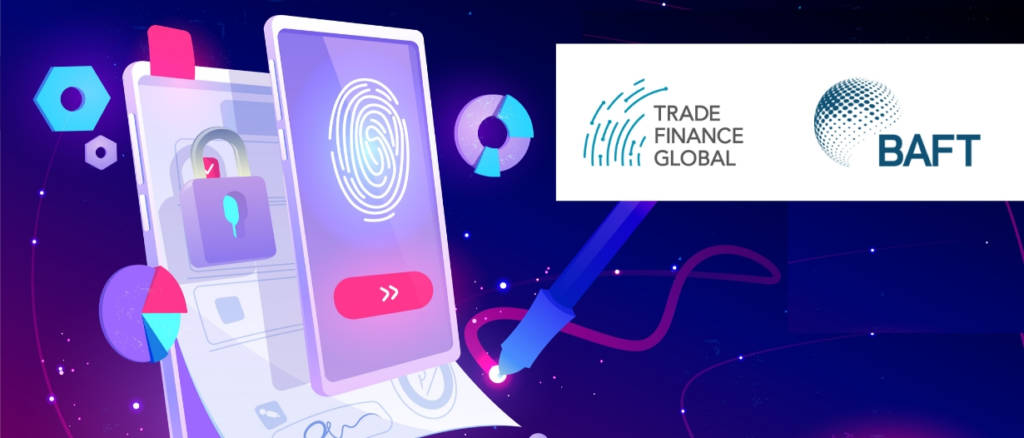
ICC URC 522 Uniform Rules for Collections eURC Version 1.0 Supplement for Electronic Presentation are now in effect as of 1 July 2019
For Collections eURC v1.0 highlights:
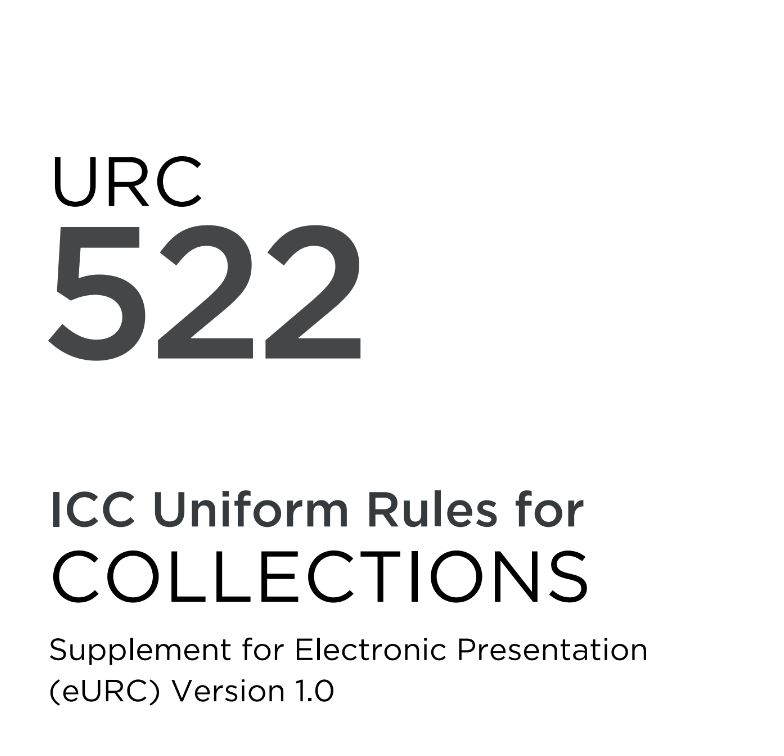
1. The eURC supplements ICC Publication URC 522 in order to accommodate presentation of electronic records alone or in combination with paper documents.
2. The eURC shall apply where the collection instruction indicates that it is subject to the eURC.
3. Document shall include an electronic record.
4. Place for presentation means an electronic address.
5. Sign and the like shall include an electronic signature.
6. May be presented in any format, unless specified by the collection instruction.
Bank guidelines for eURC collections
- The eURC shall apply where the collection instruction indicates that it is subject to the eURC latest version. The collection instruction must indicate a place for the presentation of electronic records (email address and/or URL.
- An eURC collection is also subject to URC 522 without express incorporation.
- An eURC collection instruction must indicate the applicable version of the eURC. It must also indicate the electronic address for presentation to the collecting or presenting bank. It must also indicate the format for accepting electronic records, such as PDF and version number.
The present future of documentary letters of credit and collections
The first UCP Supplement for Electronic Presentation was published in April of 2002. The latest version UCP 600 v2.0 was put into effect in July 2019; along with the first version of the URC 522 v1.0 Supplement. For eighteen years the international trade finance banking community has ignored the plea of trading company’s worldwide to reduce payment time and cost of letters of credit and collections. Putting paper documents into a courier pouch instead of attaching them to an email has been just plane silly, going on for almost twenty years.

Here is what is going to start happening now that the ICC eRules cat is out of the bag.
- Trading companies are going to demand their Letters of credit be issued under UCP 600 Supplement 2.0 for Electronic Presentation with the email address of the issuing bank included in the cover letter.
- Trading companies are going to demand the requirement for a routing through the advising and/or negotiating bank be dropped from additional conditions.
- Exporters are going to prepare their negotiable document sets under eRules and send them directly to the issuing bank via email.
- Export negotiation bank fees are going to go to zero because exporters are going to stop paying their advising banks to do the negotiation, and instead let the importer pick up their in-country costs.
- Export payment times are going to come down from a world average of 24 days today, to the 5 days allotted for processing under UCP 600 Article 14 (b).
- Trading partners are going to use video conferencing with third party Internet platforms to coordinate their document requirements with their freight forwarders, SGS inspectors, chambers of commerce and carriers.
- International trade banks are going to change their digitization efforts from reducing their own costs to reducing the cost and time for their customers.
- Trading partners are going to begin using ICC rules driven non-bank fintechs for trade finance instead of the banking community.
- The future of trade finance that is coming this year is a new industry of non bank fintechs that are going to provide:
- (a) non bank trade finance credit and collections; with
- (b) trade transaction ePlatforms; with
- (c) private escrow services, that offer
- (d) video conferencing with all parties in the transaction, compiling
- (e) electronic records and documents, with
- (f) non negotiable bills of lading, and
- (g) no export negotiation fees, and
- (h) five day export payments, with
- (i) an increase use of documentary collections; and
- (j) online transaction managers; with
- (k) non bank fintech funds transfer within minutes.
In Summary
This paperless trade finance world is going to be an important engine to help power economies of all countries to get back on their feet. Their big corporations may be tied to their big banks for trade finance services …. but millions and millions of small and medium size companies are not, and they are the ones that are going to get us out of this mess because that’s where the jobs are.
This article was written by a member of TFG’s 2020 International Trade Professionals Programme. Find out more here.

Disclaimer: The views that have been expressed on this page are that of the author, which may or may not be in line with Trade Finance Global or, LIBF’s view.
















